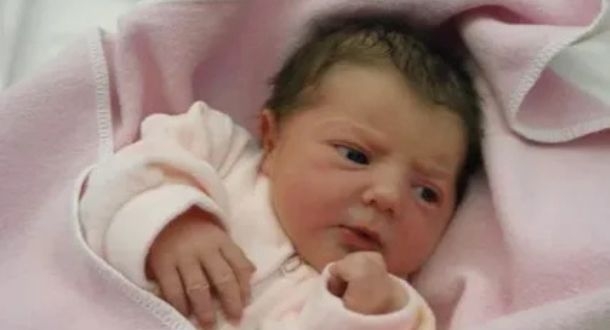Reborn Baby Dolls: Therapeutic or Toy?

In recent years, the popularity of reborn baby dolls has surged, drawing attention from collectors, parents, artists, and therapists alike. These hyper-realistic dolls, often mistaken for real infants due to their lifelike details, provoke a range of emotional responses. But are they primarily toys, or do they serve a deeper therapeutic purpose? Understanding what is a reborn baby and the contexts in which these dolls are used can help clarify their role in contemporary society.
What Is a Reborn Baby?
To the uninitiated, what is a reborn baby may seem like a confusing concept. A reborn baby is a handcrafted art doll designed to resemble a real human infant with as much realism as possible. These dolls are created using a process called “reborning,” which involves the meticulous transformation of a vinyl or silicone doll into a lifelike baby through techniques such as painting veins, adding rooted hair strand by strand, and weighting the body to mimic the weight of a real baby.
Reborn artists, known as reborners, spend hours or even days completing each doll. The results are stunningly lifelike—many feature tiny capillaries, milk spots, hand-painted fingernails, and even magnetic pacifiers. For collectors, the craftsmanship alone justifies their appeal. For others, however, reborn dolls offer much more than artistry—they provide comfort, healing, and emotional expression.
Therapeutic Uses of Reborn Dolls
One of the more compelling aspects of reborn dolls is their application in therapy. For individuals coping with loss, particularly mothers grieving the death of a child or miscarriage, a reborn doll can serve as a tool in the healing process. These dolls are sometimes used to simulate the presence of a baby, offering a sense of continuity, emotional relief, and something tangible to hold during moments of intense grief.
Elder care facilities have also begun incorporating reborn dolls into dementia therapy programs. Patients with Alzheimer’s and other forms of cognitive decline often respond positively to the dolls, showing increased social interaction, reduced anxiety, and calming effects. Holding or caring for the dolls may tap into nurturing instincts, triggering memories or emotional responses from earlier stages of life.
While these benefits are anecdotal and further research is needed, caregivers and therapists who work with reborn dolls often report significant emotional improvements in their clients.
Reborn Dolls as Toys
Despite their therapeutic value, reborn dolls are also sold and marketed as toys—often to children and teens. High-end versions are typically recommended for older individuals due to their fragility and cost, but manufacturers have created more durable, less expensive versions for younger audiences.
When used as toys, reborn dolls can promote nurturing behavior, imaginative play, and empathy in children. Unlike mass-produced baby dolls, reborns can give children a heightened sense of realism and responsibility, often leading to more attentive role-playing experiences. However, the realism can also raise concerns, especially when young users become overly attached or have difficulty distinguishing fantasy from reality.
Some parents worry about the psychological impact of treating a hyper-realistic doll like a real infant. Are these attachments healthy, or do they indicate underlying issues? Mental health professionals generally agree that, when approached in moderation and with understanding, playing with reborn dolls is harmless and potentially beneficial.
Public Reactions and Controversy
The hyper-realism of reborn dolls sometimes leads to uncomfortable public interactions. There are numerous reports of emergency responders breaking into cars to "rescue" what they thought was an unattended baby, only to find a reborn doll strapped in a car seat. These incidents, while rare, illustrate how convincingly lifelike these dolls can be—and how they can unintentionally cause distress.
Public opinion is often divided. Some people find reborn dolls unsettling or even disturbing, while others admire the artistry and therapeutic potential. For many, learning what is a reborn baby for the first time can be a surprising and emotional experience, challenging assumptions about the boundary between art, therapy, and play.
The Collectors’ Community
Beyond therapy and play, reborn dolls have inspired a devoted community of collectors and artists. These enthusiasts appreciate the craftsmanship, customize their dolls with clothes and accessories, and even simulate parenting routines. Online forums and social media platforms are filled with photos, discussions, and tutorials, creating a tight-knit community around the hobby.
For these collectors, what is a reborn baby is not merely a toy but a work of art—each with a unique personality, backstory, and aesthetic value. Just as some people collect model trains or antique furniture, others find joy and satisfaction in curating their collection of reborn dolls.
Conclusion
So, are reborn baby dolls therapeutic or simply toys? The answer lies in their usage and the individual’s intent. For some, they are cherished tools for emotional healing and therapy. For others, they are beloved collectibles or engaging toys. Understanding what is a reborn baby helps shed light on this unique phenomenon, which blurs the lines between realism, emotion, and imagination.
Whether offering solace to a grieving parent, sparking joy in a doll collector, or encouraging nurturing play in a child, reborn dolls serve multiple roles in modern life. Their impact—emotional, artistic, and social—demonstrates the complex ways humans connect with representations of themselves and others.
- Questions and Answers
- Opinion
- Motivational and Inspiring Story
- Technology
- Live and Let live
- Focus
- Geopolitics
- Military-Arms/Equipment
- Sécurité
- Economy
- Beasts of Nations
- Machine Tools-The “Mother Industry”
- Art
- Causes
- Crafts
- Dance
- Drinks
- Film/Movie
- Fitness
- Food
- Jeux
- Gardening
- Health
- Domicile
- Literature
- Music
- Networking
- Autre
- Party
- Religion
- Shopping
- Sports
- Theater
- Health and Wellness
- News
- Culture

